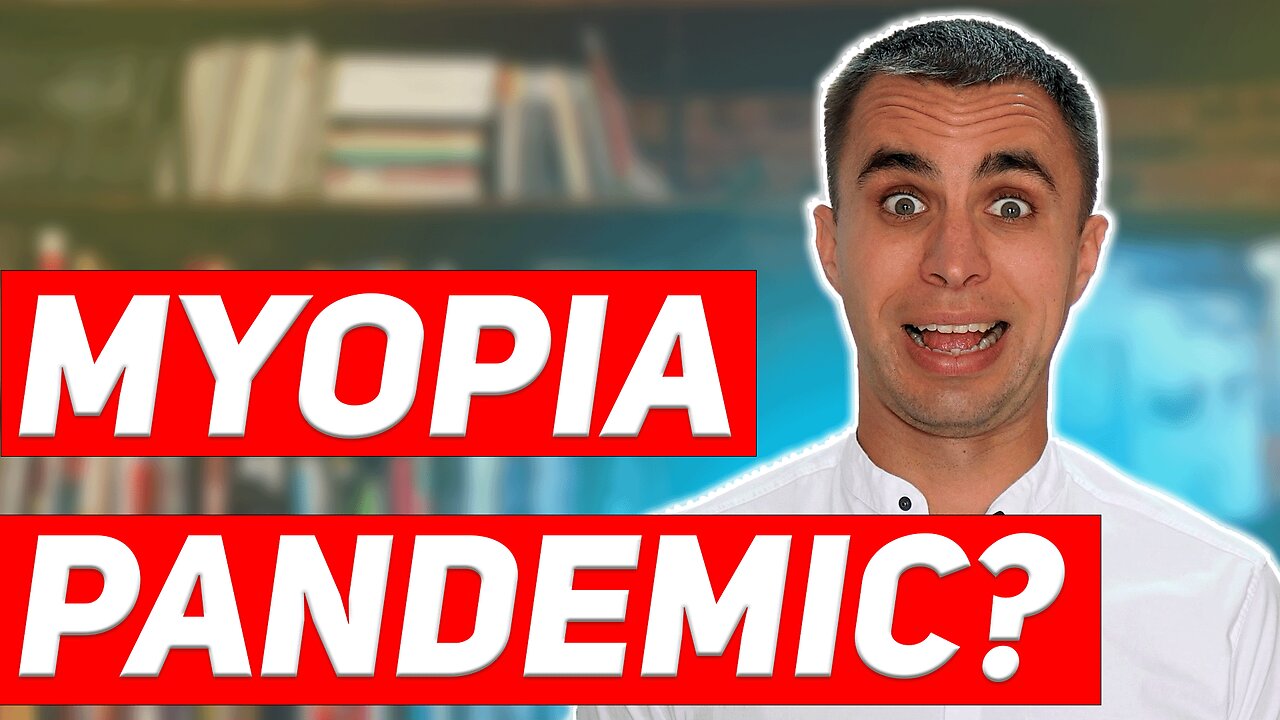Premium Only Content

Myopia is a Pandemic of 21st century
Myopia occurs when the eye's shape causes light rays to bend (refract) incorrectly, focusing images in front of the retina instead of on it. This results in a blurred vision when looking at distant objects. The condition can range from mild, requiring glasses for activities like driving or watching movies, to severe, which can increase the risk of more serious eye conditions later in life.
Factors Contributing to the Rise
Increased Screen Time: The digital age has brought about a significant increase in the time spent in front of screens. Smartphones, tablets, and computers demand prolonged periods of close-up focus, which is believed to contribute to the strain on the eyes and the development of myopia.
Reduced Outdoor Activity: Concurrent with the rise in screen time is the decrease in outdoor activities among children and adults alike. Exposure to natural daylight and the opportunity for distant viewing outdoors are thought to be protective against myopia development.
Educational Pressures: There is a correlation between high levels of education and myopia, with the condition being more prevalent in regions with rigorous academic demands on children. The intensive reading and close work associated with such educational systems may contribute to the strain on young eyes.
The Global Impact
The World Health Organization (WHO) has recognized the increasing prevalence of myopia as a significant public health concern. Estimates suggest that by 2050, nearly half of the world's population may be myopic. This projection underscores the urgent need for strategies to manage and mitigate the impact of this condition.
Addressing the Myopia "Pandemic"
Promoting Outdoor Activities: Encouraging children to spend more time outdoors has been shown to delay the onset of myopia. Schools and parents are advised to integrate outdoor play and learning into daily routines.
Limiting Screen Time: Setting reasonable limits on screen time and ensuring frequent breaks can help reduce eye strain and the risk of developing myopia.
Regular Eye Exams: Early detection and treatment of myopia are crucial in managing its progression. Regular eye examinations can help identify myopia early and allow for interventions such as prescription eyeglasses, contact lenses, or orthokeratology.
Public Health Initiatives: Awareness campaigns and educational programs can inform the public about the risk factors associated with myopia and the importance of preventative measures.
-
 LIVE
LIVE
Adam Does Movies
12 hours agoTalking Movie News + AMA - LIVE!
238 watching -
 2:34:47
2:34:47
SquallRush
13 hours agoDragon Ball Tuesday! + Reverse Nuzlocke with @DTDUBtv
14K1 -
 DVR
DVR
megimu32
2 hours agoON THE SUBJECT: Can I Get a Remix? Diddy, Gaga & Headlines That Sound Fake
8.53K5 -
 19:07
19:07
Stephen Gardner
2 hours ago🚨Steve Bannon Predicts Chaos and a Constitutional Crisis!
19.8K29 -
 LIVE
LIVE
Anthony Rogers
7 hours agoEpisode 365
158 watching -
 LIVE
LIVE
SpartakusLIVE
4 hours agoVerdansk SOLOS || #1 WZ MACHINE
117 watching -
 DVR
DVR
Geeks + Gamers
4 hours agoTuesday Night's Main Event
30.8K -
 LIVE
LIVE
Spartan (Pro Halo esports Player)
7 hours agoPro Halo Player | Back to Streaming | Warming up then scrims no comms | !optimization #ForTrav !ads !loginfix
110 watching -
 38:11
38:11
Anthony Pompliano
5 hours ago $2.78 earnedWhy Isn’t Bitcoin $150K If Everyone’s Buying?
68.2K11 -
 58:07
58:07
BonginoReport
5 hours agoCollege Campuses are Cesspools of Violence, Hatred and Division - w/ Hayley Caronia (Ep.42)
122K80